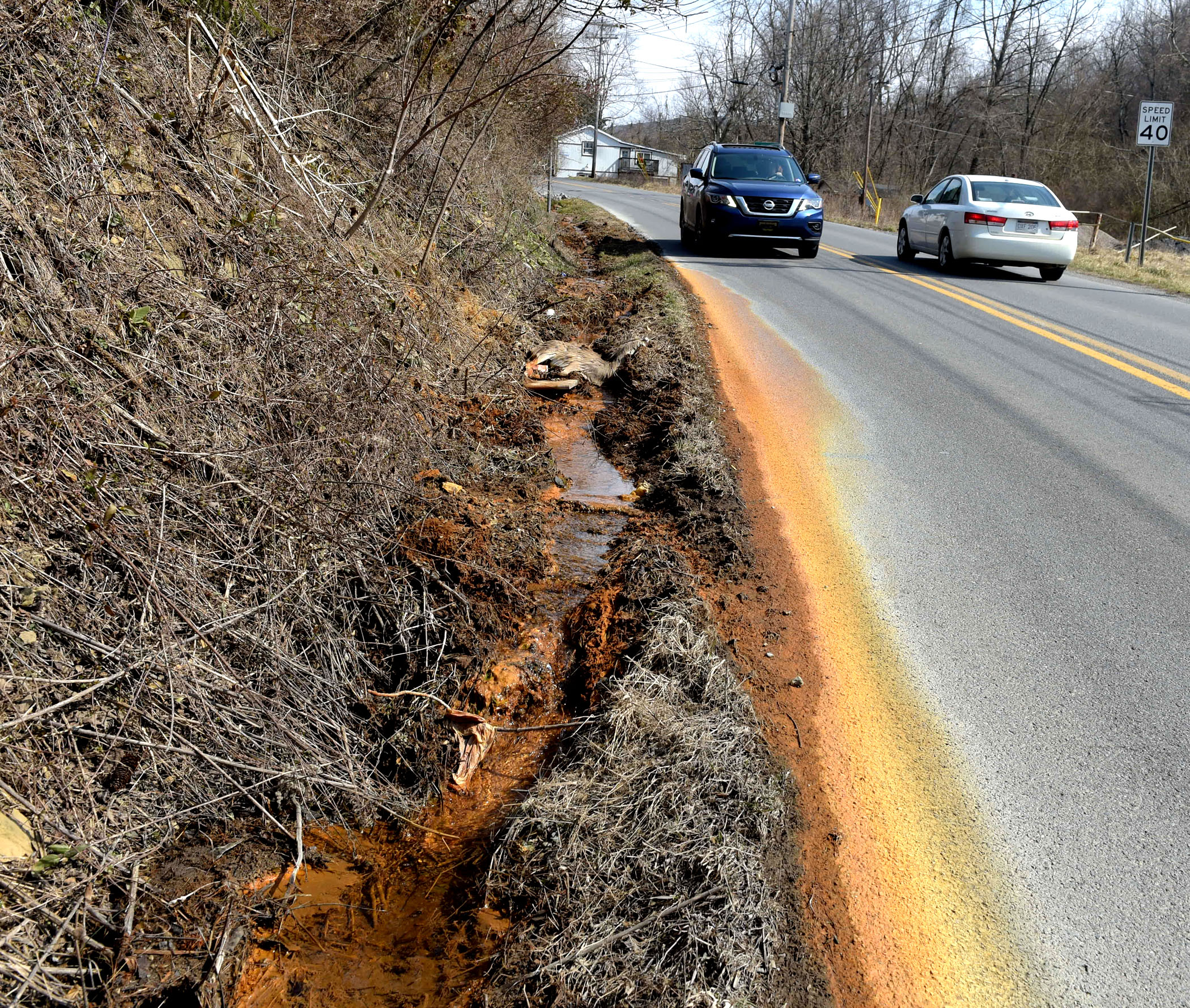WVU Today
Heavy rains last week pummeled the region hard enough to overwhelm an acid mine drainage treatment plant’s plumbing system in Preston County, causing the discharge of untreated water into Muddy Creek, which feeds into the Cheat River.
West Virginia University scientists joined the state Department of Environmental Protection in determining stream conditions near the former T&T Mine in Albright returned to normal after rainfall and melting snow led to a high-flow event. The DEP reported Friday the discharge caused acid levels in Muddy Creek and Cheat River to spike.
Paul Ziemkiewicz, director of the West Virginia Water Research Institute, and Jeff Skousen, professor of soil science and reclamation specialist, observed the site Monday and collected water samples, concluding that pH levels landed in the neutral range (7). The pH scale goes from 0 to 14. The lower the pH, the higher the acidity (vinegar is a 3), while a higher pH is associated with alkaline properties (bleach is 13).
“The water we tested is well balanced between acid and alkaline,” Ziemkiewicz said. “That’s what you like to see, and there are no public drinking water supplies along that segment that would have been affected. Data shows no effect all the way to the Monongahela River at Masontown, Pa.”
Before the DEP built an acid mine drainage treatment facility at the T&T Mine, the water in Muddy Creek, which runs along W.Va. 26, measured 3 on the pH scale, Ziemkiewicz noted. He added that a plume of aluminum and iron flowed from it into the Cheat River.
Skousen said huge volumes of water released by the mine currently flow out through the pipes installed to control the water from the mine.
“The pipes convey the water down the hill to the treatment plant,” Skousen said. “Other water from underground mines mixes with the T&T water, and all the water is combined into the piping system, which goes to the treatment plant.”
In this case, water backed up, created pressure inside the pipes and pushed the top off a manhole above the treatment plant. As a result, about 8% of the incoming mine drainage flowed untreated into Muddy Creek. The remainder continued to the treatment plant, Skousen said.
“Fortunately, the flow in the Cheat was very high that week, so every gallon of untreated mine drainage was diluted by almost 5,000 gallons of clean Cheat River water,” Ziemkiewicz estimated. “So, the chemistry of Cheat did not change much, but the biggest problem was the orange plume of iron hydroxide that was visible in the first couple days.”
The researchers also measured TDS — total dissolved solids — levels, which indicate the concentration of dissolved substances in water. The TDS limit for drinking water is 500 milligrams per liter, Ziemkiewicz said. They recorded a TDS level in Muddy Creek at 293 on Monday.
Since late 2009, WVWRI has conducted monthly monitoring on the Cheat River. Funded by Colcom Foundation, Three Rivers QUEST focuses on TDS monitoring throughout the Upper Ohio River Basin.
“We will be comparing samples collected by our 3RQ field team on Tuesday to February samples to see where we are in terms of water quality improvements,” Ziemkiewicz said. “Our long-term river monitoring is vital to keep an eye on this and future mine discharge events.”
Ziemkiewicz and Skousen also stressed the event should not be classified as a “blowout,” as some previous reports implied.
“A ‘blowout’ is a catastrophic release of huge volumes of water from an underground mine that normally ‘blows out’ the side of a mountain,” Skousen said.
The T&T Mine experienced a blowout in 1994. That event wound up killing aquatic life and damaging Cheat Lake, Ziemkiewicz said, leading the DEP and water quality experts to develop a watershed scale solution to the Cheat River.
In the years since, Skousen has taken students to the site for a firsthand analysis of the complexity of mining operations and the potential for acid mine drainage. It’s a case study of what techniques can be used to reduce acid mine drainage, he said.
“In the ’90s, the Cheat River was one of the most polluted watersheds in the state,” Ziemkiewicz said. “Yet everyone realized it had recreational potential and value. We worked with the DEP on upstream treatment — including the central plant at T&T Mine — and it’s been a tremendous uplift. The Cheat fishery has returned, and people barely notice the acid mine drainage anymore.
“Look at it like having a really bad car. It’s up on blocks. Then someone gives you a new car, and it runs great for eight years before you get a flat tire. You fix the tire and move on. You’re still much better off than you were eight years ago.”




